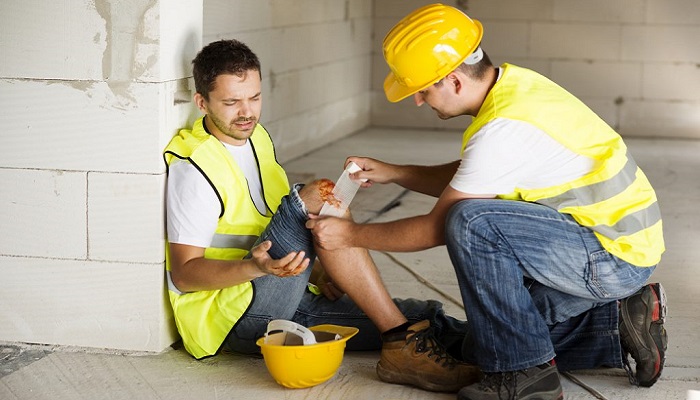What To Do After Being Injured in a Construction Accident
Construction sites are inherently dangerous, and accidents, unfortunately, happen often. If you’ve been injured on a construction site, it’s essential to know the steps you should take immediately after the accident to protect your health, legal rights, and financial stability. Here’s a guide to help you navigate this challenging time. 1. Seek Medical Attention Immediately […] The post What To Do After Being Injured in a Construction Accident appeared first on World Construction Today.

Construction sites are inherently dangerous, and accidents, unfortunately, happen often. If you’ve been injured on a construction site, it’s essential to know the steps you should take immediately after the accident to protect your health, legal rights, and financial stability. Here’s a guide to help you navigate this challenging time.
1. Seek Medical Attention Immediately
Your health and safety should be the top priority. Even if your injuries seem minor, it’s crucial to seek medical evaluation to ensure there are no hidden complications that could worsen over time. Emergency treatment can address immediate injuries, and a thorough medical examination will create an official record of your injuries, which will be essential if you file a claim.
Be sure to follow all prescribed treatments and attend follow-up appointments. Failure to adhere to your treatment plan can make it harder to prove the extent of your injuries in future claims.
2. Report the Accident to Your Supervisor
As soon as you’re able, report the incident to your supervisor or employer. It’s essential to document the accident formally and create a record with your employer. Make sure to report the accident within your state’s specific timeline, as failure to do so can affect your ability to pursue compensation through workers’ compensation claims.
Most workplaces require employees to fill out an accident report, detailing how the injury occurred. Ensure your account is as accurate as possible and keep a copy for your records.
3. Document the Scene and Gather Evidence
If possible, gather as much evidence as you can about the accident scene. Take photos or videos of the hazardous conditions that caused the accident, including machinery, materials, or any safety equipment (or lack thereof) involved. Record the date, time, location, and any conditions that may have contributed, such as poor lighting or slippery surfaces.
Collect contact information for any witnesses who may have seen the incident. Their testimonies can be crucial in supporting your version of events if you decide to file a claim.
4. Understand Your Rights and Determine Eligibility for Compensation
Construction workers are often entitled to workers’ compensation benefits, which can cover medical expenses, a portion of lost wages, and rehabilitation costs. However, workers’ compensation benefits vary by state and may have limitations. In some cases, you may also be eligible for additional compensation if a third party contributed to your injury, such as:
- Product Liability Claims: If faulty machinery or defective tools caused your injury, you might have grounds for a claim against the manufacturer.
- Premises Liability Claims: If unsafe site conditions due to another contractor’s or property owner’s negligence led to the accident, they could also be held responsible.
- Personal Injury Claims: Unlike workers’ comp, a personal injury claim can provide compensation for pain and suffering, mental anguish, and loss of enjoyment of life, in addition to covering medical costs and lost income.
A Springfield construction accident attorney can help clarify which options are available to you. An attorney will assess the details of your case to ensure you pursue the appropriate claims to maximize your compensation.
5. File a Workers’ Compensation Claim
To receive benefits, you must file a workers’ compensation claim through your employer. This typically involves completing specific paperwork, providing documentation of your injuries, and following all necessary procedures within the required timeline. Your employer’s insurance will then evaluate the claim and determine the benefits you may receive.
Workers’ compensation usually covers medical expenses and a portion of lost wages, but it doesn’t include non-economic damages like pain and suffering.
6. Consult with a Construction Accident Attorney
A knowledgeable attorney specializing in construction accidents can provide guidance through this complex process, especially if third-party liability is involved. A lawyer can help you gather evidence, negotiate with insurance companies, and build a compelling case to increase your chance of receiving fair compensation.
Construction accident claims often involve multiple parties, including contractors, equipment manufacturers, and property owners. An attorney can help identify all liable parties and determine the best course of action for your case.
7. Consider Long-Term Medical and Financial Needs
Recovering from a construction accident can take time, and some injuries lead to long-term health issues. Carefully consider the long-term financial impact of your injuries, including potential future medical expenses and the need for ongoing rehabilitation or therapy. Ensure your claim accounts for these future needs to avoid any financial strain later.
If your injury has impacted your ability to work permanently, you may be eligible for disability benefits. Working with an attorney can help you secure the full amount of compensation required to support your recovery and future.
The post What To Do After Being Injured in a Construction Accident appeared first on World Construction Today.

 machineryasia
machineryasia 








